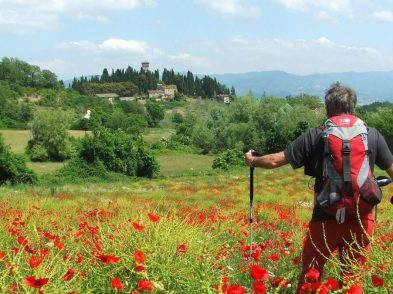Sicily is chalk to Florence’s cheese. If you’ve headed there from the north, sometimes you wonder if you’re still in Italy at all. The differences are hard to pin down – the cliché of a poor, pastoral cousin certainly sells this complex island short. Having been occupied by just about everyone from the Byzantines to the Normans, French, Spanish and Greeks, Sicily is a beguiling mish-mash of different influences. As the largest island in the Mediterranean, gateway between Europe and Africa, west and east, its strategic potential has been the source of both its triumphs and its tragedies. Yet today the turmoil is a distant echo and its traces leave a diverse medley of architecture, cuisine, culture and folklore for the visitor to revel in.
Like many islands, Sicily often seems all mountains and coastline, creating striking scenes and silhouettes. Cities and towns squeeze into the space between crags and sea. Mount Etna looms over the eastern side like a giant goddess, shrouded in mist and mystery, a permanent wisp of smoke from her lips is a reminder of her latent power. Most travellers stick to the edges, but a trip through the interior reveals a refreshing, timeless tranquillity. Modern flyways on stilts float through a landscape full of contrasts – wide plains baked by the sun, patchwork farmland, craggy heights swept by the sirocco wind, and everything in-between. Soft hills roll in every shade of green, skimmed by swooping birds of prey, and multi-coloured wildflowers dust every available verge or hillock. Lemon and orange groves span the entire island – there seem to be too many fruit to ever be eaten, and rickety carts spring up on roadsides everywhere stacked high selling them.
In contrast, the cities hum with bustle and chaos, making up with character what they lack in polish. Past blights have left Palermo a touch on the shabby side, but new funds poured into cleaning and some majestic restorations have started to make a difference. As all over Italy, churches provide a blank sheet for whatever styles and influences are around at the time. In Palermo, the red cupolas of St John of the Hermits say mosque, but inside it’s a church, one of many incongruous but iconic forms. Syracuse’s 18th-century Duomo incorporates a pagan Temple of Athena from 2,300 years earlier. Adaptation and interdependence – whether by people or religions – is key to survival, and that’s what Sicily does best.
Mosaic is an unexpectedly consistent feature across the cultures – colouring sparkling Arabic domes, twinkling from Byzantine religious artwork, and creating stunning Roman floor art at the villa at Piazza Armerina. There are innumerable archaeological sites in Sicily, most showing traces of several periods of the island’s history, with Greek being the most prominent. Despite all efforts it seems you just can’t get enough of them and each somehow delivers its own unique wow-factor. In the abandoned ancient city of Segesta, the Doric temple’s unspoilt hillside position and its fantastic state of preservation are magical. You could get lost as you roam around the many ruins at Agrigento’s ‘Valley of Temples’. And at Syracuse, you can see three sites for the price of one: a Greek Theatre, an equally impressive Roman Amphitheatre, and the world’s largest altar to boot. The perfect white rock semi-circle of a Greek theatre invites you to sit awhile, no matter that there’s no drama to see.
When it comes to food, strong flavours abound in salty, hearty fare with a hint of chilly. Pizza bases are more solid. Pine nuts, raisins and fennel are prominent, cooking up unusual and delicious combinations. Initially used as a substitute for parmesan, breadcrumbs too have become an integral part of local dishes. And if you’re into fresh fish and seafood, of course this is the place to be, and you’re never far from a fish market displaying a mind-boggling array. In coastal villages a Fish Man does the rounds with the day’s catch, calling his wares as he goes. To my delight, Sicilians also have a sweet tooth and their pastries are as enticing as they are plentiful. Rows of sugared shaped temptations line every counter, almost always delivering a shot of sweet creamy something in the middle.
Like its Mediterranean neighbours, in Sicily the sunshine is a license to loiter. And seemingly, the older you are the better you get at this unique pastime. Old men draw their fold-up chairs to the kerb, perch on benches, or gather round upturned cardboard boxes to play cards. Or they simply stand on street corners for hours on end, doffing their caps at the familiar faces passing through. Life is different here. The closeness of communities can sometimes be off-putting, but when you’re in, it feels like the biggest, warmest family you could ever hope to be part of.
It’s not just the sun that makes Sicily worth lingering.






